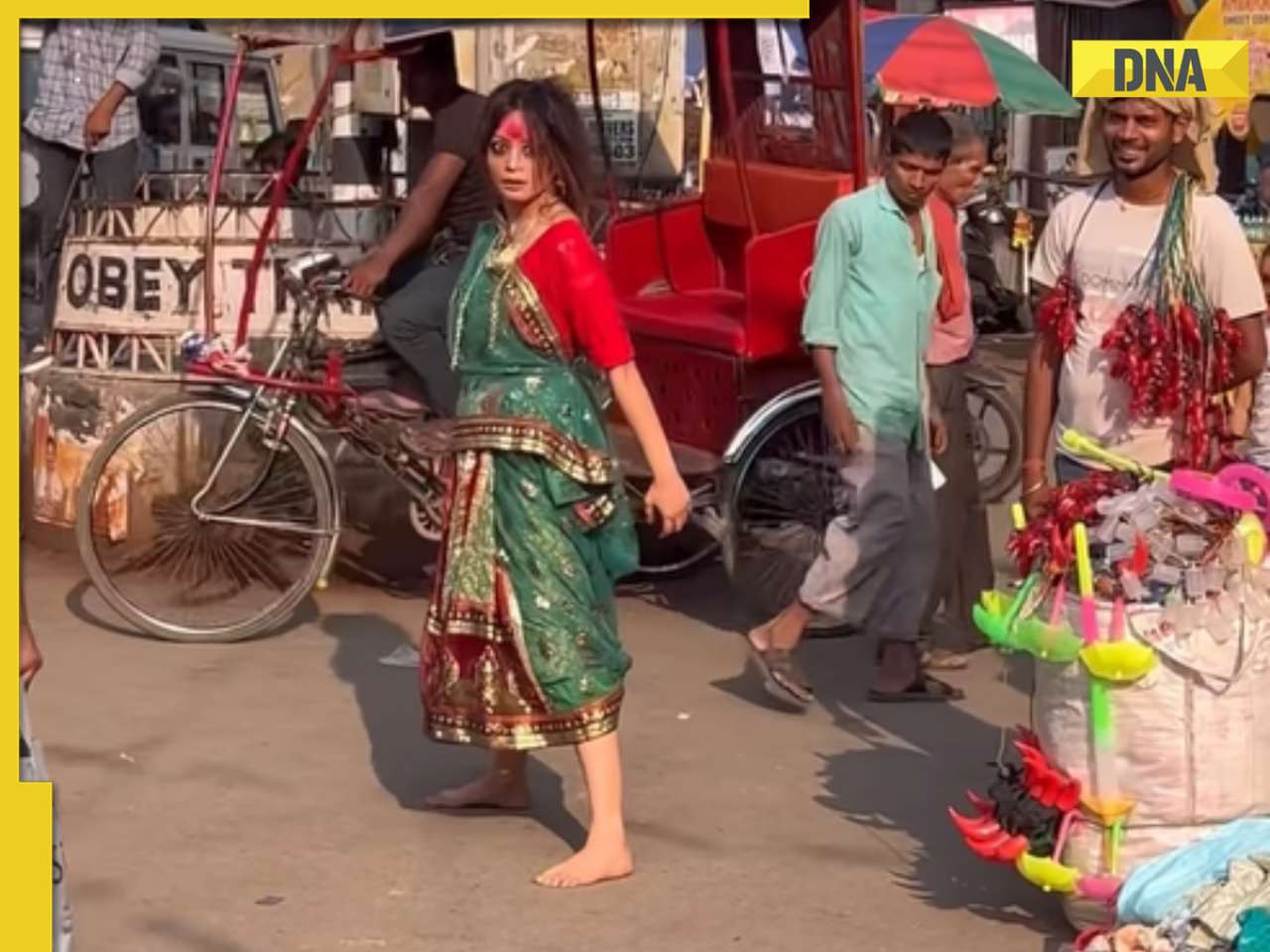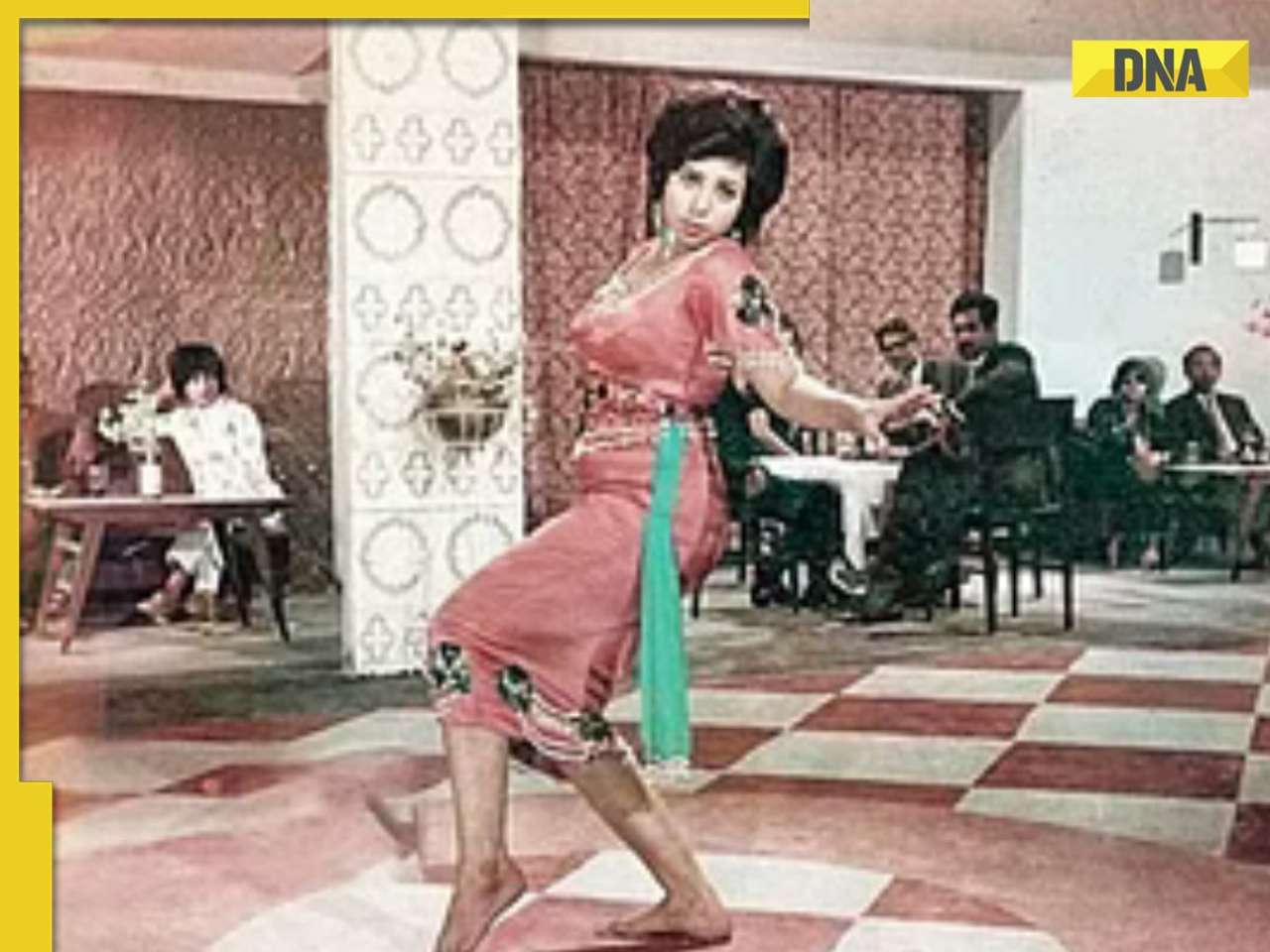From carpet weaving to hand block printing, the drying up of export orders is sounding a death knell.
Venugopal Mitukula is in Mumbai to find buyers for the colourful, hand-made dhurries (carpets) his family has been making for years in the Andhra Pradesh town of Warangal, which is known for its traditional crafts. Most of the carpets are exported to Europe, but unlike earlier years, when his annual turnover used to cross Rs30 lakh, Mitukula has no takers this time.
"For the last 5-6 months my export agents are not reporting any demand from the foreign markets. There are no inquiries even from my regular customers," says Mitukula. "If this continues, we will have no option but to shut down our looms and take up some other work."
Warangal used to have 5,000 to 6,000 looms at one point of time. Today this number is down to about 15 as cheaper machine-made carpets have flooded the market. Only the more discerning buyers who are willing to pay extra for the colours, texture and handiwork of the handmade dhurries have been sustaining the remaining traditional weavers. Now if the export market collapses due to the economic recession in the West, it may be the end of the road for these weavers.
"As it is, we struggle to find workers because weaving is hard work. People find it easier to be a security guard or an autorickshaw driver. So I don't know if we can keep running our looms if we don't get export orders soon," says Mitukula.
For Mohammed Hussain Khatri, who specialises in hand block printing of silk saris, shawls and dress materials, this the second major threat to the traditional craft that has been handed down in his family for five generations. The last time his business floundered was in the nineties when the cheaper and smoother Chinese silk hit the export market with machine prints.
Khatri survived by ramping up the design and colour of his hand-printed saris for which there was still a domestic market through specialised outlets like Benzer and Kala Niketan as well as government emporiums.
"On a two-square-metre shawl, I have used 128 design combinations in 650 block impressions. Such design cannot be replicated even in computerised machine printing. The effect of the combination of vegetable dyes we use in a print like Kalamkari is also different from what you get in machine or screen printing," says Khatri.
But now the gloom after the stock market crash threatens to undo all the gains Khatri made since the Chinese invasion.
"Sales were down even during Diwali," informs Khatri.
The entire handicraft chain is affected, not just the producers. Take Harikant Sharma, proprietor of Mumbai-based Pushpam Arts which sells Rajasthani traditional paintings on silk and paper. Sharma is a wholesaler who supplies these paintings to outlets in five-star hotels as well as departmental stores across India. September to March is usually a busy time for him, but things are different this time.
"Sales were going on well till November. But after the terror attacks, the number of tourists has sharply dropped. Hotels and stores aren't placing orders any more," said Sharma, who is sitting on a growing inventory.
According to interim figures released by the Exports Promotion Council for Handicrafts, exports of handicrafts decreased by Rs1,015.36 crore during April to September 2008: That's a decrease of 18.39 per cent over the corresponding period in the previous year.
The worst affected are handicrafts of low value that are exported in large numbers.
"These have shorter delivery periods and hence have already felt the effects of recession," said Adarsh Kumar, director, All India Artisan and Craftsmen Association (AIACA).
As for premium handicrafts, the situation will become clearer in February when the international and Indian trade fairs that are the main drivers of this sector are held. Most of the member organisations of AICA are however bracing for a drop in orders by holding off on any new capital or growth expenditures, according to Kumar.
The cancellation of three handicraft exhibitions in November and December may be a precursor of what's in store. "All the money we spent on fabric and other materials for the exhibitions has gone down the drain," says Khatri, adding that there has also been a 60 per cent drop in demand in international markets.
Artisans bank on exhibitions to attract consumers, because in the general market younger women these days mostly go for Western clothes or cheaper machine-made saris. So the drying up of exports and exhibition sales spells big trouble.
"Wholesalers, exporters, and bulk buying boutique owners are hesitating to place big orders as they are worried about future demand and their cash flow," said Laila Tyabji, chairperson, Dastkar.
Tyabji said she was surprised to see visitors turning up in large numbers at the recent Nature Bazaar organised by Dastkar in Delhi, suggesting that retail spending in India had not dried up.
"They were buying even expensive sarees and home accessories in a carefree manner."
Sasha, a not-for-profit marketing organisation for craftspeople, is also encouraging artisans to expand in the domestic market while at the same time improving their efficiency for exports. "Buyers are now asking for smaller shipments more frequently. They are also asking for a longer credit period," said Roopa Mehta, executive director, Sasha.
"We are also looking at cost savings, increasing productivity and reviewing profit margins." It's a fight for survival for traditional artisans in 2009.
![submenu-img]() Meet man who once suffered loss of Rs 15 crore, then built Rs 2000 crore turnover company at 60, he is…
Meet man who once suffered loss of Rs 15 crore, then built Rs 2000 crore turnover company at 60, he is…![submenu-img]() 'They did her dirty': Aishwarya Rai fans criticise stylist for her 'failed art project' outfit on Cannes red carpet
'They did her dirty': Aishwarya Rai fans criticise stylist for her 'failed art project' outfit on Cannes red carpet![submenu-img]() Woman walks on the streets of Tokyo in saree, viral video shows people’s reaction
Woman walks on the streets of Tokyo in saree, viral video shows people’s reaction![submenu-img]() Blinkit offering ‘free dhaniya’ with vegetable orders, people now asking for free…
Blinkit offering ‘free dhaniya’ with vegetable orders, people now asking for free…![submenu-img]() Kartam Bhugtam: Shreyas Talpade-starrer is a riveting dive into the unknown
Kartam Bhugtam: Shreyas Talpade-starrer is a riveting dive into the unknown![submenu-img]() Meet PhD wife of IIT graduate hired at Rs 100 crore salary package, was fired within a year, he is now…
Meet PhD wife of IIT graduate hired at Rs 100 crore salary package, was fired within a year, he is now…![submenu-img]() Meet woman not from IIT, IIM or NIT, cracked UPSC exam in first attempt with AIR...
Meet woman not from IIT, IIM or NIT, cracked UPSC exam in first attempt with AIR...![submenu-img]() Maharashtra Board Results 2024: MSBSHSE class 10th, 12th results soon, know how to check results via SMS
Maharashtra Board Results 2024: MSBSHSE class 10th, 12th results soon, know how to check results via SMS![submenu-img]() Meet Indian genius who became world’s 'youngest' surgeon at 7, worked in IIT for...
Meet Indian genius who became world’s 'youngest' surgeon at 7, worked in IIT for...![submenu-img]() Meet Kashmir boy, who is JEE topper, wants to pursue Computer Science, he aims to clear...
Meet Kashmir boy, who is JEE topper, wants to pursue Computer Science, he aims to clear...![submenu-img]() DNA Verified: Is CAA an anti-Muslim law? Centre terms news report as 'misleading'
DNA Verified: Is CAA an anti-Muslim law? Centre terms news report as 'misleading'![submenu-img]() DNA Verified: Lok Sabha Elections 2024 to be held on April 19? Know truth behind viral message
DNA Verified: Lok Sabha Elections 2024 to be held on April 19? Know truth behind viral message![submenu-img]() DNA Verified: Modi govt giving students free laptops under 'One Student One Laptop' scheme? Know truth here
DNA Verified: Modi govt giving students free laptops under 'One Student One Laptop' scheme? Know truth here![submenu-img]() DNA Verified: Shah Rukh Khan denies reports of his role in release of India's naval officers from Qatar
DNA Verified: Shah Rukh Khan denies reports of his role in release of India's naval officers from Qatar![submenu-img]() DNA Verified: Is govt providing Rs 1.6 lakh benefit to girls under PM Ladli Laxmi Yojana? Know truth
DNA Verified: Is govt providing Rs 1.6 lakh benefit to girls under PM Ladli Laxmi Yojana? Know truth![submenu-img]() Aishwarya Rai Bachchan turns heads in intricate black gown at Cannes, walks the red carpet with injured arm in cast
Aishwarya Rai Bachchan turns heads in intricate black gown at Cannes, walks the red carpet with injured arm in cast![submenu-img]() Laapataa Ladies' Poonam aka Rachna Gupta looks unrecognisable in viral photos, amazes with jaw-dropping transformation
Laapataa Ladies' Poonam aka Rachna Gupta looks unrecognisable in viral photos, amazes with jaw-dropping transformation![submenu-img]() In pics: Taarak Mehta Ka Ooltah Chashmah actress Deepti Sadhwani dazzles in orange at Cannes debut, sets new record
In pics: Taarak Mehta Ka Ooltah Chashmah actress Deepti Sadhwani dazzles in orange at Cannes debut, sets new record![submenu-img]() Ananya Panday stuns in unseen bikini pictures in first post amid breakup reports, fans call it 'Aditya Roy Kapur's loss'
Ananya Panday stuns in unseen bikini pictures in first post amid breakup reports, fans call it 'Aditya Roy Kapur's loss'![submenu-img]() Remember Harsh Lunia? Just Mohabbat child star, here's how former actor looks now, his wife is Bollywood's popular...
Remember Harsh Lunia? Just Mohabbat child star, here's how former actor looks now, his wife is Bollywood's popular...![submenu-img]() Haryana Political Crisis: Will 3 independent MLAs support withdrawal impact the present Nayab Saini led-BJP government?
Haryana Political Crisis: Will 3 independent MLAs support withdrawal impact the present Nayab Saini led-BJP government?![submenu-img]() DNA Explainer: Why Harvey Weinstein's rape conviction was overturned, will beleaguered Hollywood mogul get out of jail?
DNA Explainer: Why Harvey Weinstein's rape conviction was overturned, will beleaguered Hollywood mogul get out of jail?![submenu-img]() What is inheritance tax?
What is inheritance tax?![submenu-img]() DNA Explainer: What is cloud seeding which is blamed for wreaking havoc in Dubai?
DNA Explainer: What is cloud seeding which is blamed for wreaking havoc in Dubai?![submenu-img]() DNA Explainer: What is Israel's Arrow-3 defence system used to intercept Iran's missile attack?
DNA Explainer: What is Israel's Arrow-3 defence system used to intercept Iran's missile attack?![submenu-img]() 'They did her dirty': Aishwarya Rai fans criticise stylist for her 'failed art project' outfit on Cannes red carpet
'They did her dirty': Aishwarya Rai fans criticise stylist for her 'failed art project' outfit on Cannes red carpet![submenu-img]() Kartam Bhugtam: Shreyas Talpade-starrer is a riveting dive into the unknown
Kartam Bhugtam: Shreyas Talpade-starrer is a riveting dive into the unknown![submenu-img]() Richa Chadha says Heeramandi co-star Sharmin Segal being trolled for her performance is 'audience’s right'
Richa Chadha says Heeramandi co-star Sharmin Segal being trolled for her performance is 'audience’s right'![submenu-img]() Meet only Indian actress whose film is competing for top prize at Cannes; not Aishwarya, Deepika, Kiara, Priyanka, Alia
Meet only Indian actress whose film is competing for top prize at Cannes; not Aishwarya, Deepika, Kiara, Priyanka, Alia![submenu-img]() How two heroines beat Rajinikanth, Vijay, Dhanush to give Tamil cinema's biggest hit of 2024; low-budget film earned...
How two heroines beat Rajinikanth, Vijay, Dhanush to give Tamil cinema's biggest hit of 2024; low-budget film earned...![submenu-img]() Woman walks on the streets of Tokyo in saree, viral video shows people’s reaction
Woman walks on the streets of Tokyo in saree, viral video shows people’s reaction![submenu-img]() Why Australians walk barefoot in public: Here’s the reason
Why Australians walk barefoot in public: Here’s the reason![submenu-img]() People in this country compete to see who’s best at doing nothing, here's why
People in this country compete to see who’s best at doing nothing, here's why![submenu-img]() Viral video: Influencer dressed as 'Manjulika' dances on crowded road, internet reacts
Viral video: Influencer dressed as 'Manjulika' dances on crowded road, internet reacts![submenu-img]() Viral video: Baby elephant receives 'Z-category security' during family nap in Tamil Nadu reserve
Viral video: Baby elephant receives 'Z-category security' during family nap in Tamil Nadu reserve






































)


















)
)
)
)
)
)